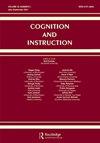Storywork in STEM-Art: Making, Materiality and Robotics within Everyday Acts of Indigenous Presence and Resurgence
IF 2.6
1区 心理学
Q2 PSYCHOLOGY, EDUCATIONAL
引用次数: 46
Abstract
Abstract This article presents findings from TechTales, a participatory design research (PDR) project where learning scientists, public library staff members, informal science educators, and staff members from Native-American-serving organizations collaborated to design a family-based robotics workshop that was grounded in storytelling. We approach this by engaging Indigenous ways of knowing and being from a sociocultural learning theory perspective. Through analyzing families-in-interaction as they constructed dioramas with robotics that told their family stories, we explore how cultivating consequential learning environments in STEM is intimately intertwined with historicity, knowledge systems, and the agentic positioning of learners to design new technologies. We find that using storywork as the design focus of building dioramas created learning environments where computer programing and robotics became dynamic tools toward family-making, collaboration, and the active presencing of Indigenous knowledge systems and cultural practices. Living and interrelating with story and its knowledge systems through making were enactments of Indigenous resurgence in everyday ways. From a structure of social practices perspective, this opens up learning spaces for engagement in STEM-Art practices and in relation to other social practices of consequence, such as cultural flourishing and affiliation, collaboration and family-making, and societal repositioning.stem艺术中的故事:本土存在和复兴中的日常行为中的制作,物质性和机器人
摘要本文介绍了参与式设计研究(PDR)项目TechTales的研究结果,在该项目中,学习型科学家、公共图书馆工作人员、非正式科学教育工作者和美国原住民服务组织的工作人员合作设计了一个以讲故事为基础的家庭机器人研讨会。我们通过从社会文化学习理论的角度参与土著人的认识和存在方式来解决这一问题。通过分析互动中的家庭,他们用机器人构建了讲述他们家庭故事的立体模型,我们探索了在STEM中培养相应的学习环境如何与历史性、知识系统和学习者设计新技术的代理定位紧密交织在一起。我们发现,使用故事作品作为建筑立体模型的设计重点,创造了一种学习环境,在这种环境中,计算机程序和机器人成为了家庭制作、合作以及积极展示土著知识系统和文化实践的动态工具。通过制作与故事及其知识体系生活和相互联系,是土著人以日常方式复兴的体现。从社会实践结构的角度来看,这为参与STEM艺术实践以及与其他重要社会实践的关系开辟了学习空间,如文化繁荣和从属关系、合作和家庭建设以及社会重新定位。
本文章由计算机程序翻译,如有差异,请以英文原文为准。
求助全文
约1分钟内获得全文
求助全文
来源期刊

Cognition and Instruction
Multiple-
CiteScore
7.90
自引率
12.10%
发文量
22
期刊介绍:
Among education journals, Cognition and Instruction"s distinctive niche is rigorous study of foundational issues concerning the mental, socio-cultural, and mediational processes and conditions of learning and intellectual competence. For these purposes, both “cognition” and “instruction” must be interpreted broadly. The journal preferentially attends to the “how” of learning and intellectual practices. A balance of well-reasoned theory and careful and reflective empirical technique is typical.
 求助内容:
求助内容: 应助结果提醒方式:
应助结果提醒方式:


